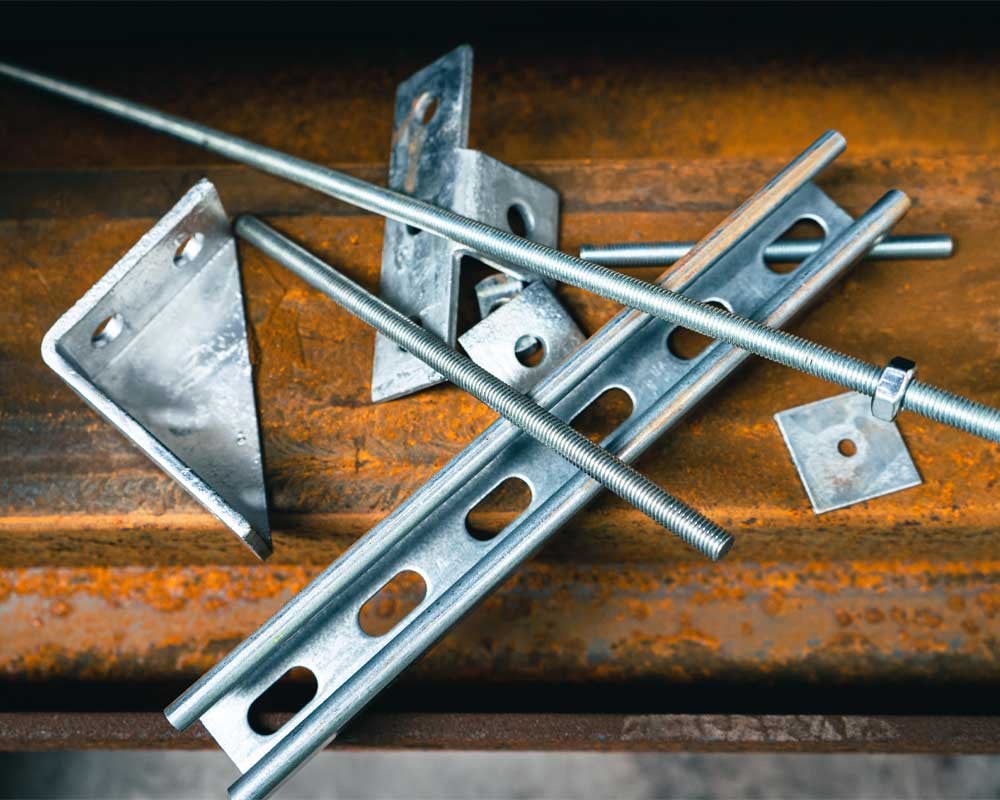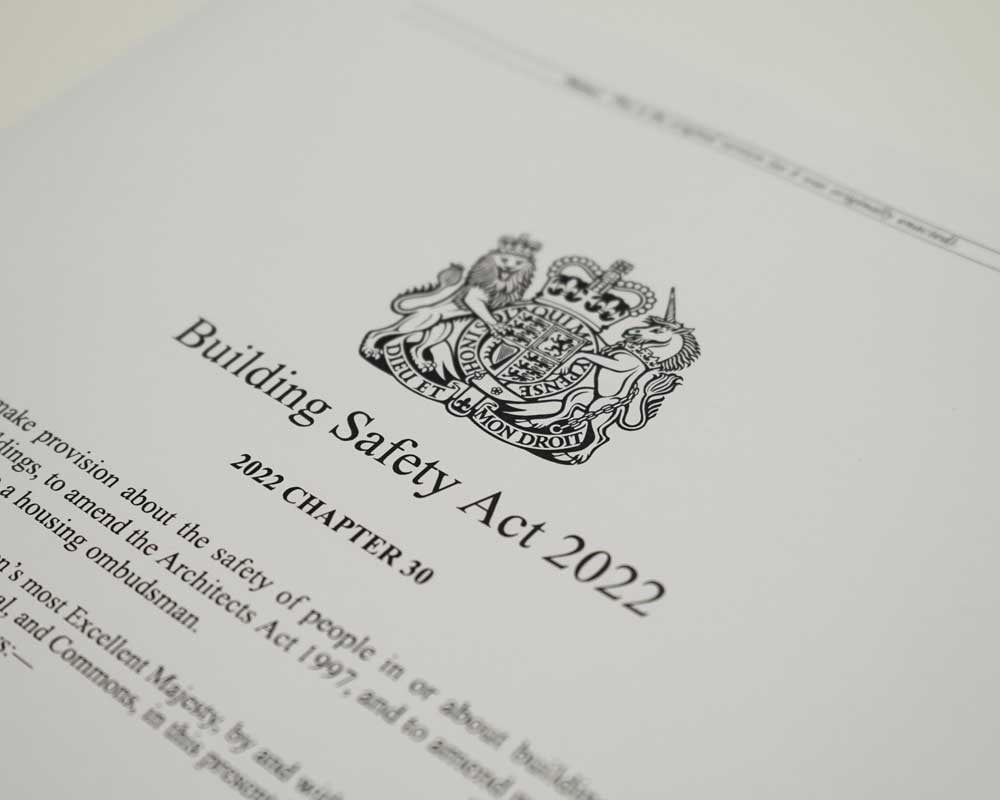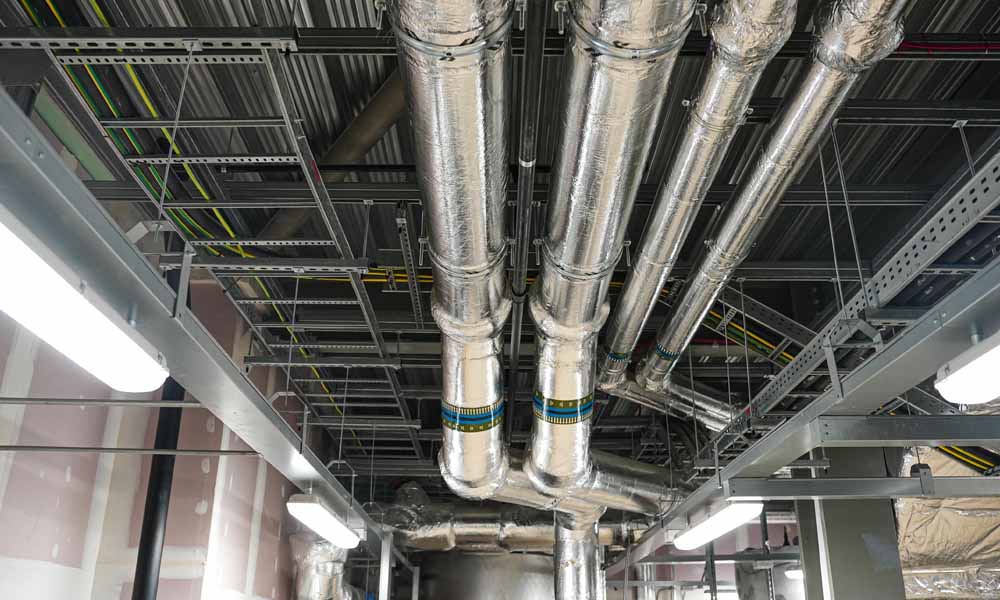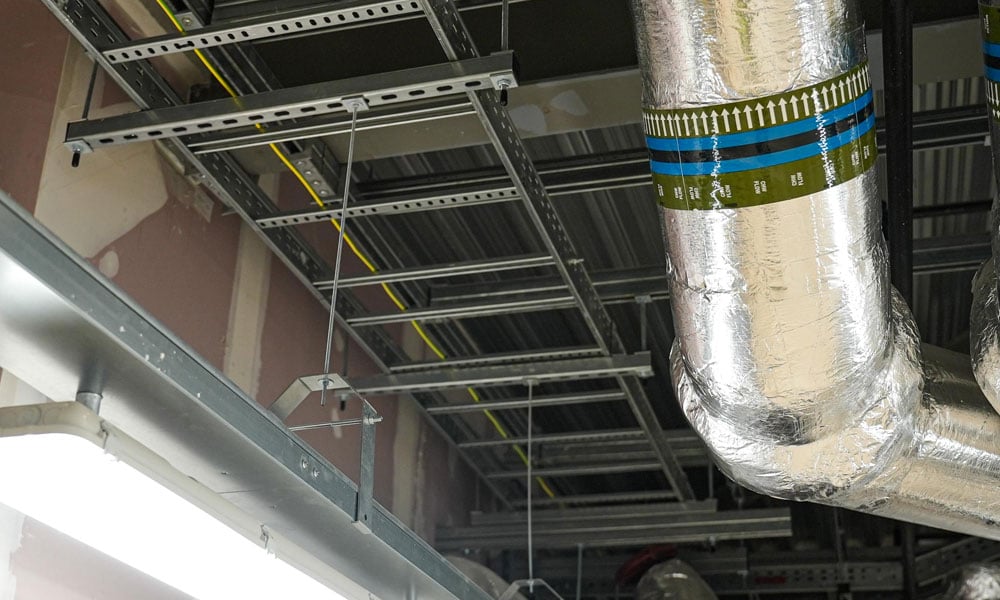Tested channel systems – we’ve spoken about these so much, I wouldn’t blame you if you’re tired of hearing of them or even view them as a fad!
But lend me an ear and I’ll tell you exactly why they’re not.
Tested Channel Systems are engineered supports where each component (individual channel lengths & fittings) that makes up a 'channel system' have been tested as part of a system – and there’s a reason they’ve been called ‘the way forward’.
They make headway towards a safer future in construction, focused on compliant installations, testing, evidence and system identification.
So, why should tested channel systems play an important part in your M&E support installation?
#1 They help reduce bracket suspension failure
#2 They come with the necessary evidence
#3 You’re likely to win more projects
1. Tested channel systems help to minimise the risk of bracket suspension failure.
Although it’s impossible to eliminate risk entirely, using a tested channel system is a sure-fire way to reduce the risks involved with M&E support installations.
Typical brackets found on site are often procured solely based on price and comprised of a mixture of components from various manufacturers, making them untraceable, unidentifiable, and the load data invalid.

And if that’s not enough, often these untested bracket systems are installed by untrained (and therefore ‘incompetent’) installers, due to the unfortunate lack of accessibility to training. This leads to installations that are not provable or safe.
In contrast, testing common connections as a system can prove that the bracket can support the loads applied.
Training your site team also greatly reduces the risk of bracketry failure, whilst also providing evidence to back up you installation.

2. Tested channel systems come with the necessary evidence
We touched on this one in the above point, but allow me to give you some more context.
You may have heard about the 2022 Building Safety Act; and if not, then this article will help you get a basic understanding of what it is and how it can impact the supply chain. The Building Safety Act has caused quite a stir in our sector, and for good reason.

To keep it short, the act suggests that you need evidence behind all construction products including M&E bracket installations to submit as part of the ‘key building safety’ information. That means you need proof that all the components that make up your system are not only fit-for-purpose (can handle loads) on their own but also that their combination with other components has been tested and proven to be sufficient as well.
For safety-critical components such as anchors & bracketry, you need 2 types of evidence:
- All the information behind a product specification (including tested data & accreditations)
- The necessary qualifications to prove the competency of those installing and signing off your M&E supports.
So how can M&E contractors comply with recent policy and regulation without it being a hassle? You’re in luck, because a tested channel system allows you to be compliant with the Act in a cost-effective way.
That’s because the components of tested channel systems all come from a single manufacturer, ensuring reliable test data (evidence) and identifying all components as part of the same system.
If a Tier 1 contractor asks you to provide evidence and you fail to comply, you might not be able to pass to the next Gateway in the project. Worse still, you could even face a fine or imprisonment!
It’s understandable if this all seems overwhelming – but that’s where a tested channel system can easily solve your problems. 
3. Tested channel systems can help you to win projects.
Complying with the 2022 Building Safety Act is not just about meeting regulations; it's also about improving safety in the built environment.
Using tested channel systems can demonstrate to Tier 1s that M&E contractors are taking necessary steps to comply with the 2022 Building Safety Act and improve safety, at the same time removing the liability off their backs.
Remember no one is expecting this to happen overnight, but taking these small steps can help.
Along with using a tested channel system, you can also:
✅ Record all connection points in your bracket design, including the load capability of each point (from tested channel system data).
✅ Identify the lowest load value from all connection points and ensure that the load applied to the bracket does not exceed this value (better yet, factor in some safety).
✅ Document this entire process for your bracket design and keep it on file.
By implementing these best practices, you'll become known as reputable M&E contractor who will reduce the risk of costly rework, helping you to gain a competitive advantage in the market!
The choice is yours - will you continue with outdated practices or make the necessary changes? 
4. Tested channel systems help you to stay on budget
It’s no secret that our industry faces criticism about the levels of safety and compliance in our work – and it’s expected. For the average M&E contractor, reducing costs is, of course, a concern, as operating within tight margins to survive is a common struggle.
So, while the sector is moving towards more compliant practices, many are still cautious due to the perceived upfront costs.
Making sure not to compromise safety for cost is easier said than done, and even when you make a conscious effort, it may be difficult to strike the right balance. In reality, keeping costs low is an immediately detectable short-term benefit that may reel you in, but compliance and due diligence are far more valuable in the long run.
Tested channel systems are already optimised to achieve the best and safest results with minimal costs. So, not only would you reduce your chances of overspending or ‘over-engineering’, but you also wouldn’t have to worry about future failure/costly rework or physical harm (and the reputational costs/fines that might come with it).
5. They reduce embodied carbon for your project.
With the Net Zero 2050 goal inching closer every year, sustainability is becoming an increasingly important issue for the building services supply chain, and carbon reduction plans have become a requirement for contractors bidding on large government contracts.
One way of removing embodied carbon for your M&E support installation is to use a tested channel system.
Tested channel systems can play a role in reducing embodied carbon in M&E support installations by:
✅ Installing design-optimised supports, using less material and waste, which can reduce embodied carbon.
✅ Avoiding the need to replace components that make up non-compliant M&E bracketry, which reduces transport to and from the site and therefore embodied carbon.
✅ Reducing the requirement for multiple deliveries by getting all components as a system from one source.
Of course, there is much more that the whole supply chain can do to reduce embodied carbon, but it’s a start!

6. Going forward…
As you can tell, there are a lot of benefits to using a tested channel system and it’s not just a trend or a system to make your life more difficult.
In fact, it’s a necessary step that was needed to make the move towards a safer built environment, and compliance with the Building Safety Act, achievable and accessible for all M&E contractors.
So, what do you say? Why not read more about our version, the MX Channel System, and find out for yourself?

